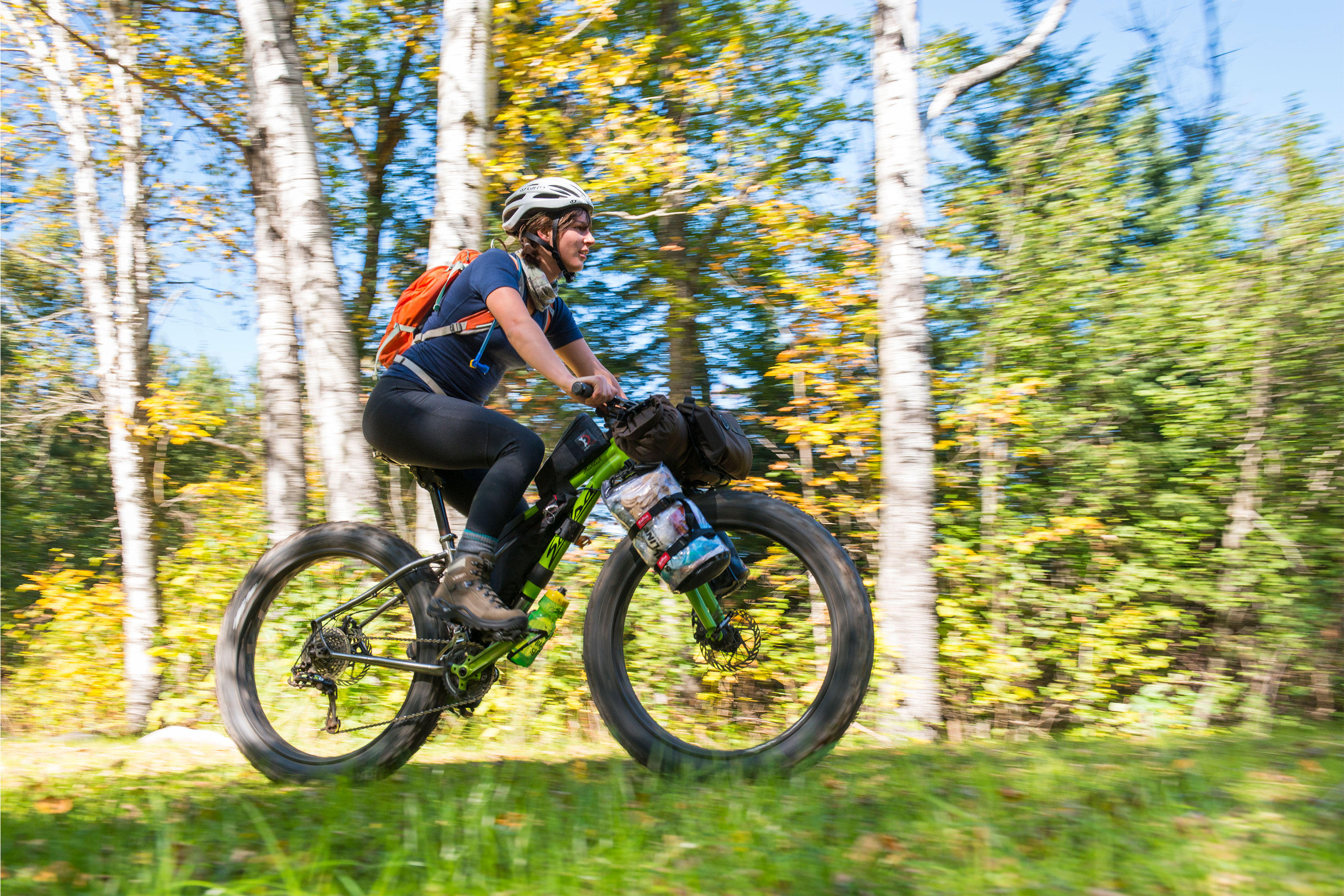
How to Go Bikepacking in Minnesota
How to Go Bikepacking in Minnesota
Por Brian Fanelli
Bikepacking is an overnight, self-supported bike camping trip on low-maintenance forest roads, logging trails, gravel and singletrack—everything you love about backpacking, plus the extra speed, distance and thrill of a bike trip.
With more than a third of Minnesota’s land area classified as forest, the countless low-maintenance forest roads and logging trails that crisscross our state forests are perfect for getting off the grid. Josh Kowaleski, avid bikepacker and sales manager at Spokengear Cyclery in Two Harbors, recommends you “just look at the state forest map, pick a few campgrounds and figure out how to connect them. It’s about that sense of exploration.”
You might get lost—in fact, you almost certainly will—but sometimes getting lost is the best way to find adventure.

Bikepacking in the Superior National Forest, one of Minnesota's most remote destinations / Tom Thulen
What to Ride
In typical bike industry fashion, there’s a seemingly endless variety of bikepacking bikes on the market, so it’s easy to feel like bikepacking is impossible without the perfect bike. But don’t let the marketing fool you, because chances are good that you’re already the proud owner of a perfectly capable bikepacking rig.
Hardtail and rigid mountain bikes both make excellent bikepacking steeds, and in many cases, even a cyclocross or touring bike will suffice. Just make sure your bike is comfortable, can handle wide tires (around 40 millimeters) and has low gearing to spin up hills.
How to Pack
Unlike the rack-and-pannier setup popular with on-road bike tourists, bikepacking luggage is defined by lightweight, rackless bags that attach directly to your bike, the most recognizable of which are the seat pack, handlebar roll and frame bag.
If it doesn’t seem like a lot of space, that’s because it’s not. Remember: Less is more when it comes to your bikepacking supply list. According to bikepacking.com, your primary supplies should include sleeping gear, kitchen/food, tools, first aid kit, cell phone and, last but not least, a reliable navigation system.

Bikepacking through the vast and wild Superior National Forest in northeast Minnesota / Hansi Johnson
Bikepacking the 'Straddle and Paddle'
The Superior National Forest, found in the Arrowhead region of northeast Minnesota, is an unrivaled bikepacking destination. Over 3 million acres of land, water, rock and trees are within the Superior National Forest, including the massive and remote Boundary Waters Canoe Area Wilderness. Known for its vast, isolated setting and a thriving boreal forest ecosystem, the extensive forest roads of Superior National Forest are ideal for a Minnesota bikepacking escape.
It’s also home to one of the few documented Minnesota bikepacking routes, Straddle and Paddle, first published by Peter Pascale on bikepacking.com. The 180-mile trip is expected to take between three and four days, with 81% of the trip on unpaved gravel and dirt roads. “This route travels relatively flat national forest double-track and gravel roads, and includes easy logistics for camping, water and food re-supply,” says Pascale. “If you’re hungry for singletrack, you can always check out one of two great trail systems along the route.”
Day two consists of an optional but highly recommended canoe tour of the Boundary Waters’ Kelso loop. Bicycle riding is not permitted in the Boundary Waters, but canoe rentals and maps are available from Sawbill Canoe Outfitters (they'll even watch your bike while you're paddling). Day-use permits are required to enter the Boundary Waters, but good news: They’re free and don’t require a reservation.
“The forest holds many surprises, including waterfalls, hidden inns, classic outfitters, the highest point in Minnesota and an abandoned Civilian Conservation Corps camp,” says Pascale. “Celebrate the end of the ride at any of several great breweries on the Superior shore, enjoy the World’s Best Donuts (seriously) and know that any one of several local bike shops in the region can support your adventure.”
But like we said, following the published routes isn’t really what bikepacking is about. It’s about exploring the wilderness for yourself. Both of Minnesota's national forests (Chippewa and Superior) and all 59 Minnesota state forests are brimming with incredible bikepacking routes—you just have to find them.


